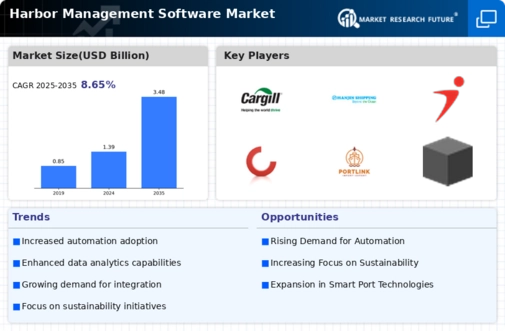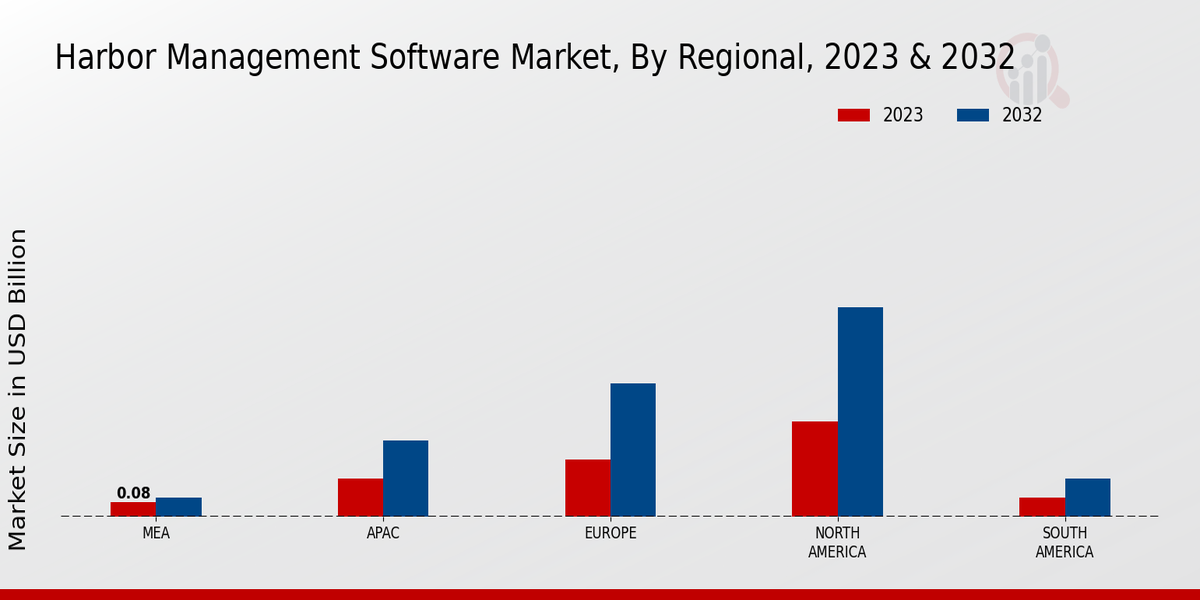Market Growth Projections
The Global Harbor Management Software Market Industry is poised for substantial growth, with projections indicating a rise from 1.39 USD Billion in 2024 to 3.48 USD Billion by 2035. This growth trajectory suggests a compound annual growth rate (CAGR) of 8.66% from 2025 to 2035, highlighting the increasing adoption of harbor management software across the globe. Factors contributing to this growth include advancements in technology, rising global trade, and the need for enhanced operational efficiency in port management. As the industry evolves, the demand for innovative solutions is likely to expand, shaping the future of harbor management.
Enhanced Security Measures
Security concerns are increasingly shaping the Global Harbor Management Software Market Industry. With the rise in global terrorism and piracy threats, ports are prioritizing the implementation of advanced security measures. Harbor management software provides comprehensive solutions for monitoring access control, cargo tracking, and incident response. By integrating security protocols into their operations, ports can safeguard assets and ensure the safety of personnel. The growing emphasis on security is likely to drive demand for sophisticated software solutions, contributing to the overall market growth as ports seek to enhance their security infrastructure.
Increasing Global Trade Activities
The Global Harbor Management Software Market Industry is experiencing growth driven by the surge in global trade activities. As international shipping volumes rise, ports are under pressure to enhance operational efficiency and streamline logistics. This software aids in optimizing berth scheduling, cargo handling, and resource allocation, thereby reducing turnaround times. For instance, the global trade volume is projected to increase significantly, necessitating advanced management solutions. The market is expected to reach 1.39 USD Billion in 2024, reflecting the urgent need for effective harbor management systems to accommodate growing trade demands.
Technological Advancements in Port Operations
Technological innovations play a pivotal role in the Global Harbor Management Software Market Industry. The integration of IoT, AI, and big data analytics into harbor management systems enhances decision-making processes and operational efficiency. These technologies facilitate real-time monitoring of port activities, predictive maintenance, and improved safety protocols. As ports adopt these advanced solutions, they can better manage increasing cargo volumes and complex logistics. The anticipated growth of the market to 3.48 USD Billion by 2035 underscores the importance of embracing technology to remain competitive in the evolving maritime landscape.
Growing Demand for Efficient Resource Management
The Global Harbor Management Software Market Industry is propelled by the increasing demand for efficient resource management in port operations. As ports strive to optimize their resources, including labor, equipment, and space, harbor management software becomes essential. These systems enable ports to analyze data and make informed decisions regarding resource allocation, ultimately improving productivity and reducing operational costs. The projected market growth to 1.39 USD Billion in 2024 reflects the urgent need for solutions that enhance resource management capabilities, allowing ports to adapt to fluctuating demands and maintain competitiveness.
Regulatory Compliance and Environmental Concerns
The Global Harbor Management Software Market Industry is influenced by stringent regulatory frameworks and growing environmental concerns. Ports are required to comply with various international and local regulations regarding emissions, waste management, and safety standards. Harbor management software assists in ensuring compliance by providing tools for monitoring and reporting environmental impacts. This is particularly relevant as ports aim to reduce their carbon footprint and enhance sustainability practices. The market's projected CAGR of 8.66% from 2025 to 2035 indicates a robust demand for solutions that help ports navigate these regulatory challenges while promoting eco-friendly operations.























Leave a Comment